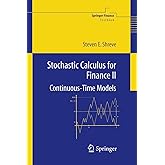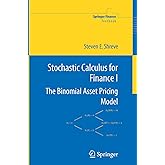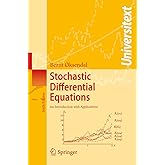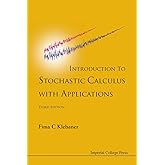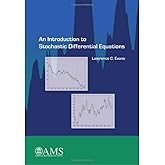
Enjoy fast, free delivery, exclusive deals, and award-winning movies & TV shows with Prime
Try Prime
and start saving today with fast, free delivery
Amazon Prime includes:
Fast, FREE Delivery is available to Prime members. To join, select "Try Amazon Prime and start saving today with Fast, FREE Delivery" below the Add to Cart button.
Amazon Prime members enjoy:- Cardmembers earn 5% Back at Amazon.com with a Prime Credit Card.
- Unlimited Free Two-Day Delivery
- Streaming of thousands of movies and TV shows with limited ads on Prime Video.
- A Kindle book to borrow for free each month - with no due dates
- Listen to over 2 million songs and hundreds of playlists
- Unlimited photo storage with anywhere access
Important: Your credit card will NOT be charged when you start your free trial or if you cancel during the trial period. If you're happy with Amazon Prime, do nothing. At the end of the free trial, your membership will automatically upgrade to a monthly membership.
Buy new:
-39% $39.36$39.36
Ships from: Amazon.com Sold by: Amazon.com
Save with Used - Good
$35.04$35.04
Ships from: Amazon Sold by: NobleMedia

Download the free Kindle app and start reading Kindle books instantly on your smartphone, tablet, or computer - no Kindle device required.
Read instantly on your browser with Kindle for Web.
Using your mobile phone camera - scan the code below and download the Kindle app.

Follow the authors
OK
Brownian Motion and Stochastic Calculus (Graduate Texts in Mathematics, 113) 2nd Edition
Purchase options and add-ons
This book is designed as a text for graduate courses in stochastic processes. It is written for readers familiar with measure-theoretic probability and discrete-time processes who wish to explore stochastic processes in continuous time. The vehicle chosen for this exposition is Brownian motion, which is presented as the canonical example of both a martingale and a Markov process with continuous paths. In this context, the theory of stochastic integration and stochastic calculus is developed. The power of this calculus is illustrated by results concerning representations of martingales and change of measure on Wiener space, and these in turn permit a presentation of recent advances in financial economics (option pricing and consumption/investment optimization).
This book contains a detailed discussion of weak and strong solutions of stochastic differential equations and a study of local time for semimartingales, with special emphasis on the theory of Brownian local time. The text is complemented by a large number of problems and exercises.
- ISBN-100387976558
- ISBN-13978-0387976556
- Edition2nd
- Publication dateAugust 25, 1991
- LanguageEnglish
- Dimensions6.1 x 1.12 x 9.25 inches
- Print length493 pages
There is a newer edition of this item:
$387.99
(34)
Usually ships within 2 to 3 weeks
Frequently bought together

Customers who viewed this item also viewed
Editorial Reviews
Review
Second Edition
I. Karatzas and S.E. Shreve
Brownian Motion and Stochastic Calculus
"A valuable book for every graduate student studying stochastic process, and for those who are interested in pure and applied probability. The authors have done a good job."―MATHEMATICAL REVIEWS
Product details
- Publisher : Springer; 2nd edition (August 25, 1991)
- Language : English
- Paperback : 493 pages
- ISBN-10 : 0387976558
- ISBN-13 : 978-0387976556
- Item Weight : 3.35 pounds
- Dimensions : 6.1 x 1.12 x 9.25 inches
- Best Sellers Rank: #461,835 in Books (See Top 100 in Books)
- #24 in Stochastic Modeling
- #291 in Calculus (Books)
- #468 in Probability & Statistics (Books)
- Customer Reviews:
About the authors

Discover more of the author’s books, see similar authors, read book recommendations and more.

Discover more of the author’s books, see similar authors, read book recommendations and more.
Customer reviews
Customer Reviews, including Product Star Ratings help customers to learn more about the product and decide whether it is the right product for them.
To calculate the overall star rating and percentage breakdown by star, we don’t use a simple average. Instead, our system considers things like how recent a review is and if the reviewer bought the item on Amazon. It also analyzed reviews to verify trustworthiness.
Learn more how customers reviews work on AmazonTop reviews from the United States
There was a problem filtering reviews. Please reload the page.
- Reviewed in the United States on December 29, 2014Nice texts for graduate students.
- Reviewed in the United States on June 17, 2001The theory of Brownian motion is ubiquitous in physics and mathematics, and has recently become very important in mathematical finance and network modeling. The observation of the irregular movement of pollen suspended in water by Robert Brown in 1828 led Albert Einstein to formulate a theory for Brownian motion. In this book the authors outline rigorously the theory of Browian motion. Their logic is impeccable, and the content is fascinating reading, even to those very experienced in the subject.
The authors begin in chapter 1 with the task of defining martingales and filtrations, with the notion of a stochastic process being adapted to a filtration taking on particular importance. They omit the proof that a process is progressively measurable if and only if it is measurable and adapted, because of the difficulty of the proof, but give a reference where the proof can be found. Continuous-time martingales are defined, with (compensated) Poisson processes given as an example. The Doob-Meyer decomposition and square-integrable martingales are discussed, and the chapter if full of exercises, with solutions provided to some of these at the end of the chapter. Brownian motion is formally defined in the next chapter, with its existence proven using Wiener measure on the space of continuous functions on the positive half line. The discussion in this chapter has to rank as one of the best in print, due to the meticulous and precise manner in which the material is presented. The Markov property of Brownian motion is proven, along with a good presentation of the Levi modulus of continuity. Readers working in constructive quantum field theory will see their usual construction of Wiener measure in the second exercise of the chapter. Those working in that area are used to seeing (conditional) Wiener measure defined on a collection of cylinder sets, which is then extended to the Borel subsets . Such a construction is done in this book, but the approach is somewhat different than what physicists normally see in quantum field theory.
The theory of stochastic integration is presented in Chapter 3, and it is superbly written. The authors are careful to distinguish the theory of integration for stochastic processes from the ordinary one with emphasis on the actual computation of stochastic integrals. The reader is first asked to explore the Stratonovitch and Ito integrals in an exercise., and then a thorough treatment is given by the authors later in the chapter. The authors point out the differences between the Ito and Stratonovich integrals, with the latter being defined for a smaller class of functions than the former. The important Ito rule for changing variables is discussed, and then used to give the Kunita-Watanabe martingale characterization of Brownian motion. Physicists involved in constructive quantum field theory will appreciate the discussion of the Trotter existence theorem in this chapter.
The connection of Brownian motion with partial differential equations, so familiar to physicists via the heat equation, is the subject of the next chapter. These equations give the transition probabilities of the stochastic process, and are studied here first in the context of harmonic analysis, namely the classical Dirichlet problem. This is followed by a beautiful treatment of the one-dimensional heat equation and the Feynman-Kac formulas. Those readers working in constructive quantum field theory will see the Green's function lurking in the background.
The very important topic of stochastic differential equations is outlined in chapter 5, with emphasis placed on the study of diffusive processes. The solutions of these equations have an immense literature, and the authors do not of course overview all of it, but do give a useful introduction. Both strong and weak solutions are discussed, with the Girsanov and Yamada-Watanabe techniques used throughout. Explicit solutions are given for linear stochastic differential equations, such as the Ornstein-Uhlenbeck process governing the Brownian motion of a particle with friction. Financial engineers will appreciate the discussion of the applications of this formalism to option pricing and the Merton consumption theory in this chapter. Options pricing is cast in martingale terms, and then the usual Black-Scholes equation is derived from this. The notorious Hamilton-Jacobi-Bellman equation is discussed in the consumption/investment problem, and the authors show how to employ techniques for solving this problem instead of solving this difficult nonlinear equation. The authors give a hint of the important Malliavin calculus in the Appendix and give references for the reader.
The last chapter of the book is more specialized than the rest and deals with the Levy theory of Brownian local time. This theory does have a connection with the theory of jump processes, which are currently very important in financial and network modeling. The authors do a fine job of explaining how Poisson random measures permit the event bookkeeping in these jump processes. Their discussion is applied to the computing of the transition probabilities for a Brownian motion with two-valued drift.
- Reviewed in the United States on March 4, 2006I found this book to be an excellent introduction into the subject matter. A good background in measure theoretic probability theory definitely helps, but even without much background, it is possible to understand all, but the finest measure theoretic points (I am a hobby mathematician with an engineering background, and I simply used the book "Probability Theory" by Laha & Rohatgi to learn what was needed about measure theory).
It is amazing, how the authors motivate, what they are doing using very few, but the right, words.
The pace of the book is just right, not too brisk and not too leasurely.
The only negative point is the following:
It takes some getting used to, that many important results are presented in the form of "problems". The solutions are generally given at the end of each chapter, so one has to thumb back an forth through the text.
Last but not least, the book contains virtually no misprints! For someone, who uses this book for self study, this is a very important point!
- Reviewed in the United States on February 26, 2008This is a great book. By far, the best I have red about stochastic analysis
- Reviewed in the United States on October 15, 2016This is the "Springer Study Edition", apparently a one-time imprint for cheap print-on-demand copies of otherwise out-of-print books. Had I known this (and it does not seem to be mentioned anywhere in the item description), I probably would have sprung for a used copy of the hardcover at a similar price.
As a study copy it should suffice -- the inner margins are a bit tight, but nowhere near as bad as some PoD knockoffs. It just would have been nice to know what I was paying for.
- Reviewed in the United States on March 30, 2005This book isn't really the place to start learning about stochastic calculus. Get Oskendal's Stochastic Differential Equations: An Introduction with Applications for this.
Even to the prepared reader, this book is exasperating. It is as if the authors came up with an excellent outline for an advanced treatment of this topic. Then they realized that to do all of the material justice, they'd need to have not one, but two 400 page volumes. Their publisher must have balked at that idea, so their solution was to leave out half the detail, forcing each of our poor readers to re-generate the missing 400 pages of needed detail on his/her own. In the opinion of this reviewer, that is exactly what they have done with this text.
Fortunately for us all, there exists a nice two volume (800 page total pages) treatment of this material. Rogers & Williams Diffusions, Markov Processes, and Martingales: Volume 1, Foundations and Diffusions, Markov Processes and Martingales: Volume 2, Itô Calculus provide a thorough, accessible exposition with all the needed rigor, generality and detail.
Karatzas & Shreve's treatment of early foundational material is less than helpful to the student. Consider a pair of key results on martingales early on in the text: the optional sampling theorem and the optional stopping theorem. The authors "prove" the optional sampling theorem by appealing to the discrete time results in Chung's A Course in Probability Theory and then applying limiting arguments to bootstrap to the continuous time case. Since all of the real "ideas" are in the discrete time case, it's not clear how much of a service the authors' treatment really is. Worse yet, the optional stopping theorem isn't even called out as a theorem, but instead buried as problem.
It is curious to see which topics inspire the authors to spill ink. For example in Chapter 2, we get not one, but 3, yes three different constructions of Brownian motion: convolved heat kernels, Haar interpolation and random walks/Wiener measure. Of course, only the last construction is used going forward and the first two constructions are not brimming over with detail. This is a curious indulgence in a text that is purposefully being stingy with detail. Our poor reader has to pay the price for this indulgence with an extremely terse treatment of the strong Markov property and reflection principle, the Blumenthal Zero-One Law, and other foundational properties of Brownian motion.
Chapter 3 represents the core of the text and develops all the of "greatest hits" including the Ito Integral, Ito's rule, Levy's characterization of Brownian motion, the martingale representation theorem, the Girsanov Theorem and an introduction of Brownian local time. (Brownian local time is further developed in Chapter 6). The development of the Ito Integral is shamelessly sketchy. All the theorems are correctly stated, but the "proofs" offered aren't detailed enough to explain why all of the stated assumptions are needed. When the reader gets to the development of Ito's rule, he/she finds a rude 3 sentence introduction to semi-martingales, a topic which hadn't been explored and never gets more than a passing mention in the authors' text.
Assuming that you've understood everything going on in the text up to this point, Chapter 4 is quite nice. It gives a very intuitive introduction in the role of the Mean Value Theorem as a hook connecting stochastic integrals with classical PDE's. The section on Harmonic functions and the Dirichlet problem is quite nice. The material on the heat equation requires properties of Brownian motion most easily derived from the convolved heat kernels construction. The chapter winds up with a nice treatment of the Feynman-Kac formulas.
After the PDE's material, the reader might develop a sense of hope that the remainder of the exposition will be readily accessible. This is not the case and with the SDE's in Chapter 5, the authors return to their now too familiar terse style as they study strong and weak solutions to stochastic differential equations. At one point, the authors decide to approach the problem by generalizing from functions to functionals without even so much as defining their notion of a functional.
Really, the only good role for this text is as base material for a do-it-yourself "Moore Method" class on stochastic calculus, like they used to do for general topology at the University of Texas. If you completed a Moore-style class this way and wrote up all of your work, you'd have a very fine text covering diffusions, Markov processes, and martingales.
Top reviews from other countries
 Amazon CustomerReviewed in the United Kingdom on December 31, 2016
Amazon CustomerReviewed in the United Kingdom on December 31, 20165.0 out of 5 stars One of the best books ever written on stochastic calculus
One of the best books ever written on stochastic calculus. Easy to read, many exercises with some contained solutions to engage the reader and the book has a clear structure, ending with Paul Levy's theory of local time.
-
 Marco MReviewed in Italy on July 24, 2019
Marco MReviewed in Italy on July 24, 20195.0 out of 5 stars ottimo testo
è il testo di riferimento per approfondire il calcolo stocastico con la dovuta rigorosità matematica
 AnonReviewed in Australia on March 27, 2025
AnonReviewed in Australia on March 27, 20255.0 out of 5 stars Great Book
Great and clear
-
 大野泰治朗Reviewed in Japan on March 29, 2013
大野泰治朗Reviewed in Japan on March 29, 20135.0 out of 5 stars 簡潔かつ丁寧
Ito McKeanの今まで、理解しずらかった
local time の概念が、私にも理解できる言葉で
かいてあります。
 dbwlsdjaakReviewed in Canada on June 24, 2013
dbwlsdjaakReviewed in Canada on June 24, 20135.0 out of 5 stars Good for begginers
It is a classical text for Brownian motion and stochastic calculus and still one of the best books for starters.








